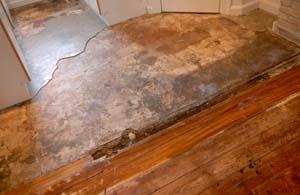Do's & Don'ts of Water Damages.
Do's & Don'ts of Water Damages.
Blog Article
Have you been in search of tips about Simple Solutions To Preventing Fire And Water Damage To Your Home?

Though water gives life, water breach on components where it's not supposed to be can lead to damage. If the water saturates right into your framework, it can peel off away surfaces and wear down the foundation. Mold and mildew and mildew additionally prosper in a wet atmosphere, which can be dangerous for your health. Homes with water damage smell moldy as well as old.
Water can originate from numerous sources such as tropical cyclones, floods, burst pipes, leakages, and also drain concerns. In case you experience water damages, it would be great to recognize some safety preventative measures. Below are a few standards on exactly how to deal with water damages.
Do Prioritize Home Insurance Coverage Protection
Water damages from flooding because of heavy winds is seasonal. However, you can likewise experience a sudden flood when a faulty pipeline suddenly bursts into your home. It would be best to have house insurance policy that covers both disasters such as natural disasters, as well as emergency situations like broken plumbing.
Do Not Neglect to Turn Off Energies
This reduces off power to your whole residence, stopping electrical shocks when water comes in as it is a conductor. Don't forget to turn off the primary water line valve.
Do Remain Proactive and Heed Climate Notifies
Listen to evacuation cautions if you live near a creek, river, or lake. Doing so lowers prospective residential or commercial property damage.
Do Not Ignore the Roofing System
You can avoid rainfall damage if there are no openings and leakages in your roofing system. This will protect against water from moving down your wall surfaces and also soaking your ceiling.
Do Take Note Of Little Leakages
A burst pipeline does not occur over night. Typically, there are red flags that indicate you have actually compromised pipelines in your house. As an example, you may discover bubbling paint, peeling wallpaper, water streaks, water discolorations, or dripping audios behind the walls. Ultimately, this pipeline will break. Preferably, you need to not await points to intensify. Have your plumbing fixed before it causes huge damages.
Do Not Panic in Case of a Burst Pipe
When it comes to water damage, timing is key. Therefore, if a pipe bursts in your home, instantly closed off your primary water shutoff to reduce off the resource. Call a credible water damage restoration specialist for support.
Water provides life, water intrusion on components where it's not meant to be can result in damage. Houses with water damage smell mildewy and also old.
Water damages from flooding charges to heavy winds is seasonal. You may see bubbling paint, peeling off wallpaper, water streaks, water spots, or dripping sounds behind the wall surfaces. When it comes to water damages, timing is key.
Water Damage Do and Don'ts
Water damage at your home or commercial property is a serious problem. You will need assistance from a professional plumber and a water damage restoration agency to get things back in order. While you are waiting for help to arrive, however, there are some things you should do to make the situation better. Likewise, there are things you absolutely shoud not do because they will only make things worse.
DO these things to improve your situation
Get some ventilation going. Open up your doors, your windows, your cabinets – everything. Don’t let anything remain closed. Your aim here is to expose as much surface area to air as possible in order to quicken the drying out process. Use fans if you have them, but only if they’re plugged into a part of the house that’s not currently underwater.
Remove as much standing water as you can. Do this by using mops, sponges and clean white towels. However, it’s important that you don’t push or wipe the water. Simply use blotting motions to soak it up. Wiping or pushing could result in the water getting pushed deeper into your home or carpeting and increasing your problem.
Turn off the power to the soaked areas. You will want to remove the danger of electrocution from the water-logged area to do some cleaning and to help the plumber and the restoration agents do their work.
Move any furniture and belongings from the affected room to a safe and dry area. Taking your possessions to a dry place will make it easier to decide which need restoring and repair. It will also prevent your belongings from being exposed to further moisture.
DON’T do any of these things for any reason
Don’t use your vacuum cleaner to suck up the water. This will not only get you electrocuted, but will also severely damage your vacuum cleaner. Use manual means of water removal, like with mops and pails.
Don’t use newspaper to soak up the water. The ink they use for newsprint runs and transfers very easily, which could then stain carpet and tile with hard-to-remove stains.
Don’t disturb mold. This is especially true if you spot a severe growth. Leave the mold remediation efforts to the professionals. Attempting to clean it yourself could mean exposing yourself to the harmful health effects of mold. Worse, you could inadvertently spread it to other areas of the house.
Don’t turn on your HVAC system until given approval from the restoration agency. Turning your HVAC system on before everything has been cleaned could spread moisture and mold all over the house.
https://www.dreyersdki.com/about-us/blog/water-damage-do-and-donts

I am just very serious about Ways to Reduce The Risk Of Fire And Water Damage and I really hope you enjoyed our article. Be sure to take the opportunity to promote this page if you enjoyed it. I treasure reading our article about Ways to Reduce The Risk Of Fire And Water Damage.
Report this page